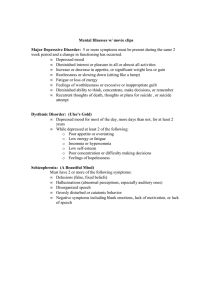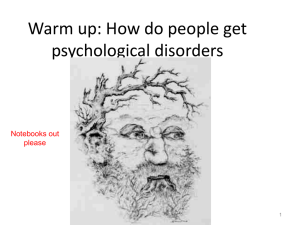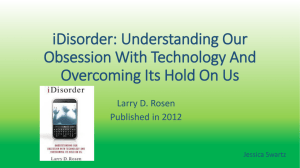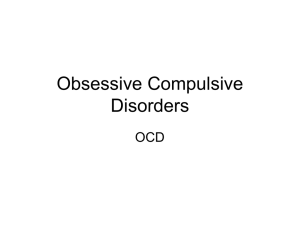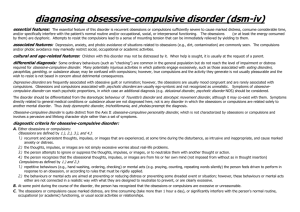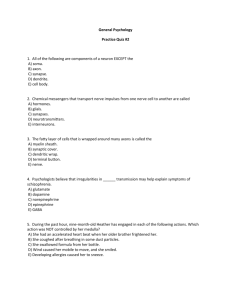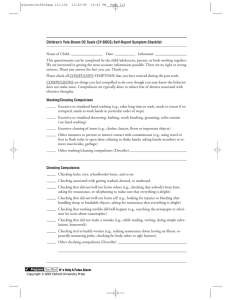Obsessive-Compulsive Disorder
advertisement
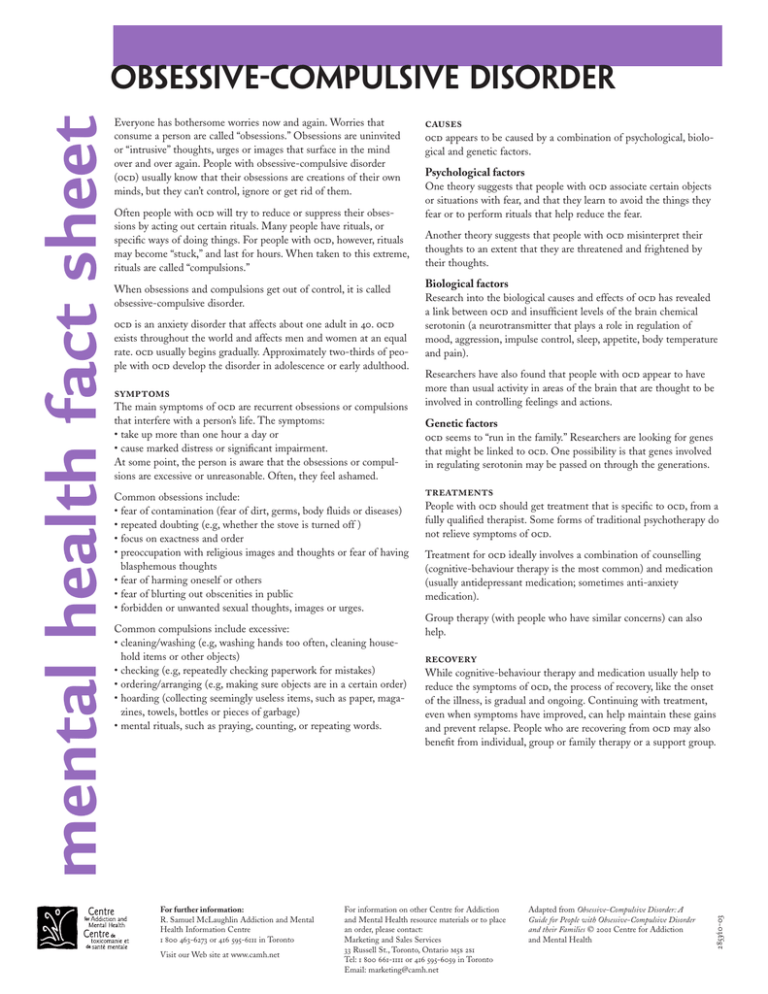
Everyone has bothersome worries now and again. Worries that consume a person are called “obsessions.” Obsessions are uninvited or “intrusive” thoughts, urges or images that surface in the mind over and over again. People with obsessive-compulsive disorder () usually know that their obsessions are creations of their own minds, but they can’t control, ignore or get rid of them. Often people with will try to reduce or suppress their obsessions by acting out certain rituals. Many people have rituals, or specific ways of doing things. For people with , however, rituals may become “stuck,” and last for hours. When taken to this extreme, rituals are called “compulsions.” When obsessions and compulsions get out of control, it is called obsessive-compulsive disorder. is an anxiety disorder that affects about one adult in . exists throughout the world and affects men and women at an equal rate. usually begins gradually. Approximately two-thirds of people with develop the disorder in adolescence or early adulthood. The main symptoms of are recurrent obsessions or compulsions that interfere with a person’s life. The symptoms: • take up more than one hour a day or • cause marked distress or significant impairment. At some point, the person is aware that the obsessions or compulsions are excessive or unreasonable. Often, they feel ashamed. Common obsessions include: • fear of contamination (fear of dirt, germs, body fluids or diseases) • repeated doubting (e.g, whether the stove is turned off ) • focus on exactness and order • preoccupation with religious images and thoughts or fear of having blasphemous thoughts • fear of harming oneself or others • fear of blurting out obscenities in public • forbidden or unwanted sexual thoughts, images or urges. Common compulsions include excessive: • cleaning/washing (e.g, washing hands too often, cleaning household items or other objects) • checking (e.g, repeatedly checking paperwork for mistakes) • ordering/arranging (e.g, making sure objects are in a certain order) • hoarding (collecting seemingly useless items, such as paper, magazines, towels, bottles or pieces of garbage) • mental rituals, such as praying, counting, or repeating words. For further information: R. Samuel McLaughlin Addiction and Mental Health Information Centre - or - in Toronto Visit our Web site at www.camh.net appears to be caused by a combination of psychological, biological and genetic factors. Psychological factors One theory suggests that people with associate certain objects or situations with fear, and that they learn to avoid the things they fear or to perform rituals that help reduce the fear. Another theory suggests that people with misinterpret their thoughts to an extent that they are threatened and frightened by their thoughts. Biological factors Research into the biological causes and effects of has revealed a link between and insufficient levels of the brain chemical serotonin (a neurotransmitter that plays a role in regulation of mood, aggression, impulse control, sleep, appetite, body temperature and pain). Researchers have also found that people with appear to have more than usual activity in areas of the brain that are thought to be involved in controlling feelings and actions. Genetic factors seems to “run in the family.” Researchers are looking for genes that might be linked to . One possibility is that genes involved in regulating serotonin may be passed on through the generations. People with should get treatment that is specific to , from a fully qualified therapist. Some forms of traditional psychotherapy do not relieve symptoms of . Treatment for ideally involves a combination of counselling (cognitive-behaviour therapy is the most common) and medication (usually antidepressant medication; sometimes anti-anxiety medication). Group therapy (with people who have similar concerns) can also help. While cognitive-behaviour therapy and medication usually help to reduce the symptoms of , the process of recovery, like the onset of the illness, is gradual and ongoing. Continuing with treatment, even when symptoms have improved, can help maintain these gains and prevent relapse. People who are recovering from may also benefit from individual, group or family therapy or a support group. For information on other Centre for Addiction and Mental Health resource materials or to place an order, please contact: Marketing and Sales Services Russell St., Toronto, Ontario Tel: - or - in Toronto Email: marketing@camh.net Adapted from Obsessive-Compulsive Disorder: A Guide for People with Obsessive-Compulsive Disorder and their Families © Centre for Addiction and Mental Health ⁄- mental health fact sheet Obsessive-Compulsive Disorder
